How to find the right acoustic guitar shape for you
How to buy the acoustic that best suits your playing style
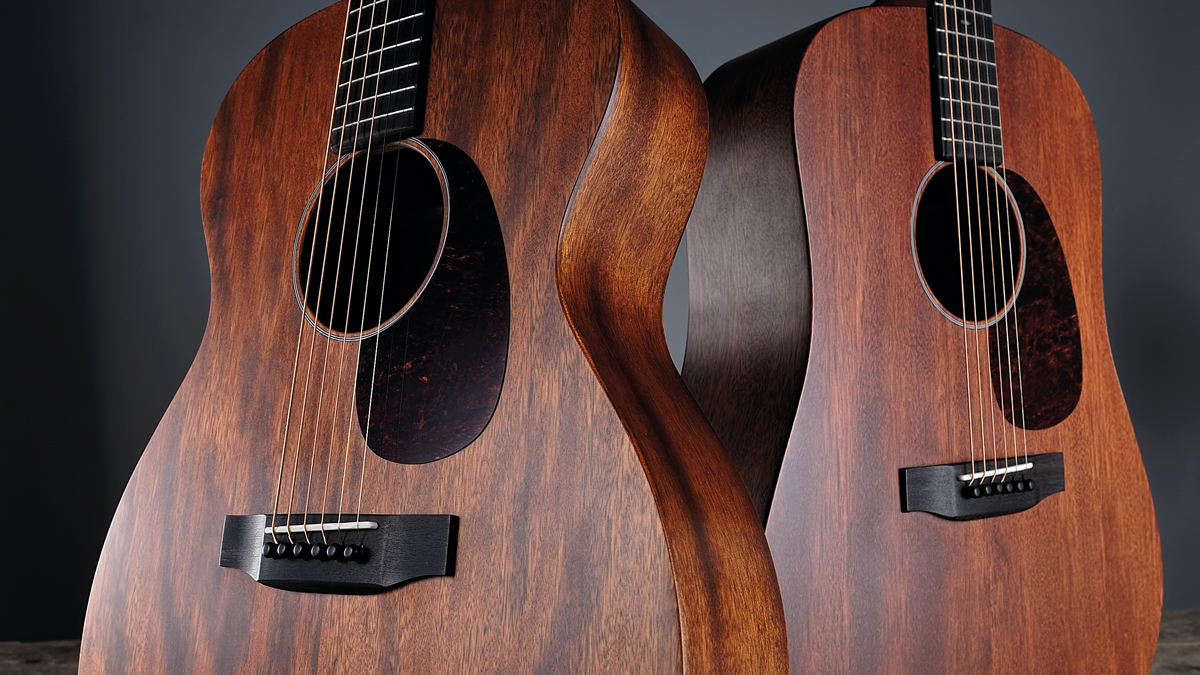
There are few more intimate relationships in musical life than a player and their acoustic guitar, but not all instruments are created equal and some are more suited to your specific needs than others.
No matter what your aesthetic or musical style is, there’s an acoustic out there waiting for you and we can help speed your search with this handy buyer’s guide looking at the main shapes, their tonal traits and some of the best value options available for each.
The all-rounder: Dreadnought, Grand Auditorium
The classic acoustic shape and the most commonly seen out there in the marketplace, the dreadnought shape tends to vary between two main types; square and slope-shouldered. That’s an aesthetic diff erence with the top of the body being fl at with square shoulders, while slope / rounded shoulders (see Gibson’s classic acoustic models) feature a gradual curve from neck to body. The dreadnought’s size (usually with a max body depth around 120mm) off ers broad enough for bottom-end qualities to make it a good guitar for covering a range of styles. Taylor’s Grand Auditorium shape is wider than a classic dreadnought body across the lower bout but with a narrow waist, and also has a reputation as an all-rounder. Tonewood choice plays its part too…
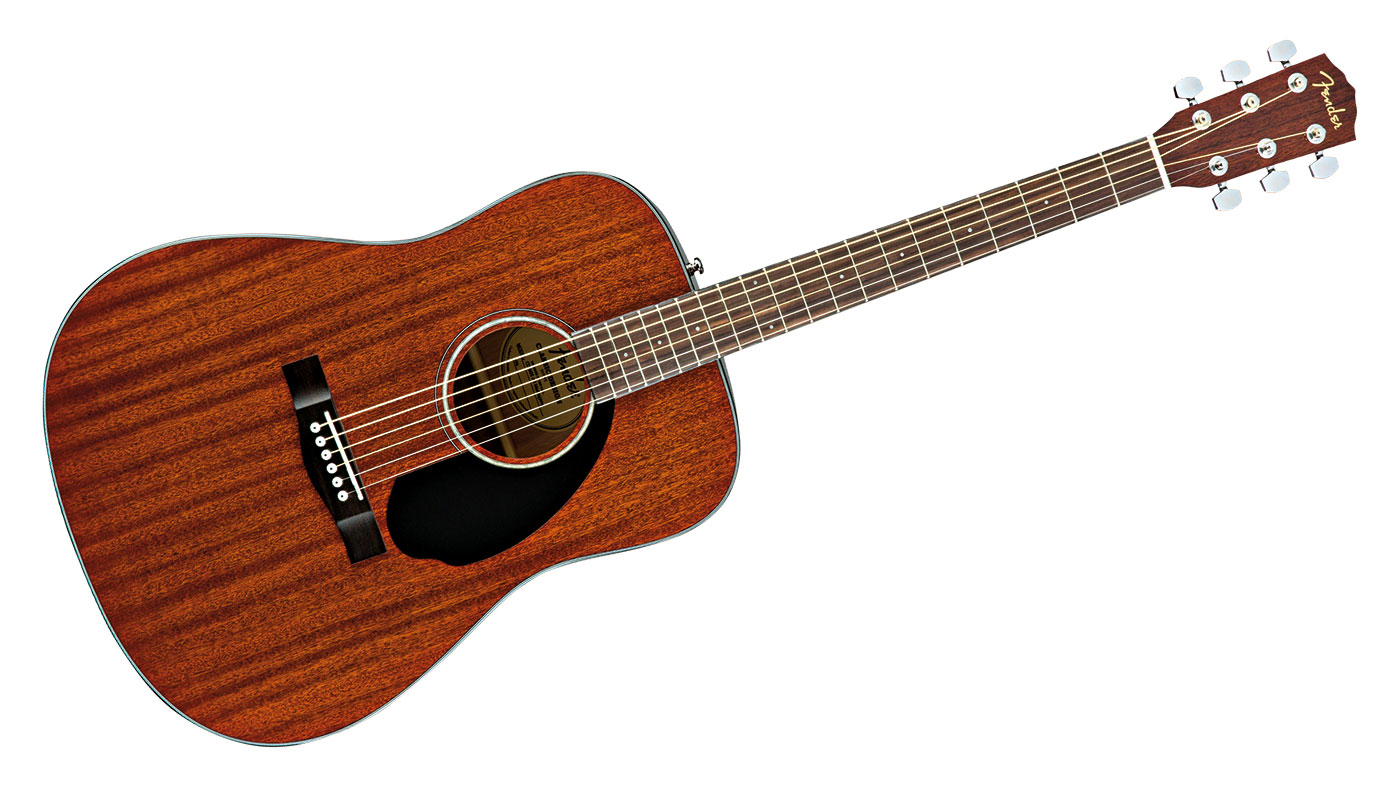
Yes, you read that price right. This really impressed us and the Classic Design model makes for a great first guitar. The mahogany top offers some mid-character with strong a defined bass notes. It’s a slinky neck too for those who are new to acoustics.
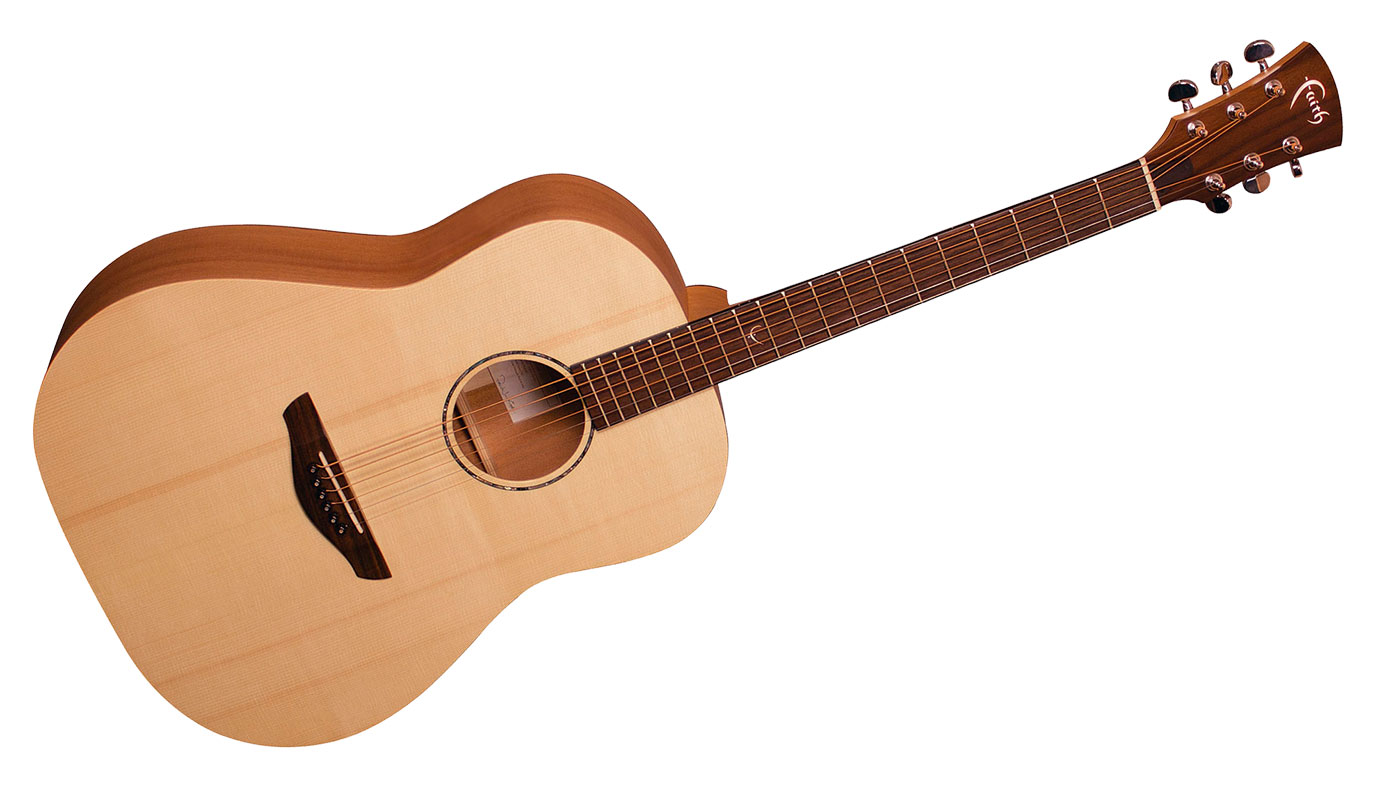
Based on the British design talents of Patrick James Eggle, the Faith brand has carved out an impressive reputation for solid-wood builds at accessible pricepoints. This simple but very stylish model is a case in point; featuring a solid Engelmann spruce top with solid Indonesian mahogany back and sides.
Get the MusicRadar Newsletter
Want all the hottest music and gear news, reviews, deals, features and more, direct to your inbox? Sign up here.
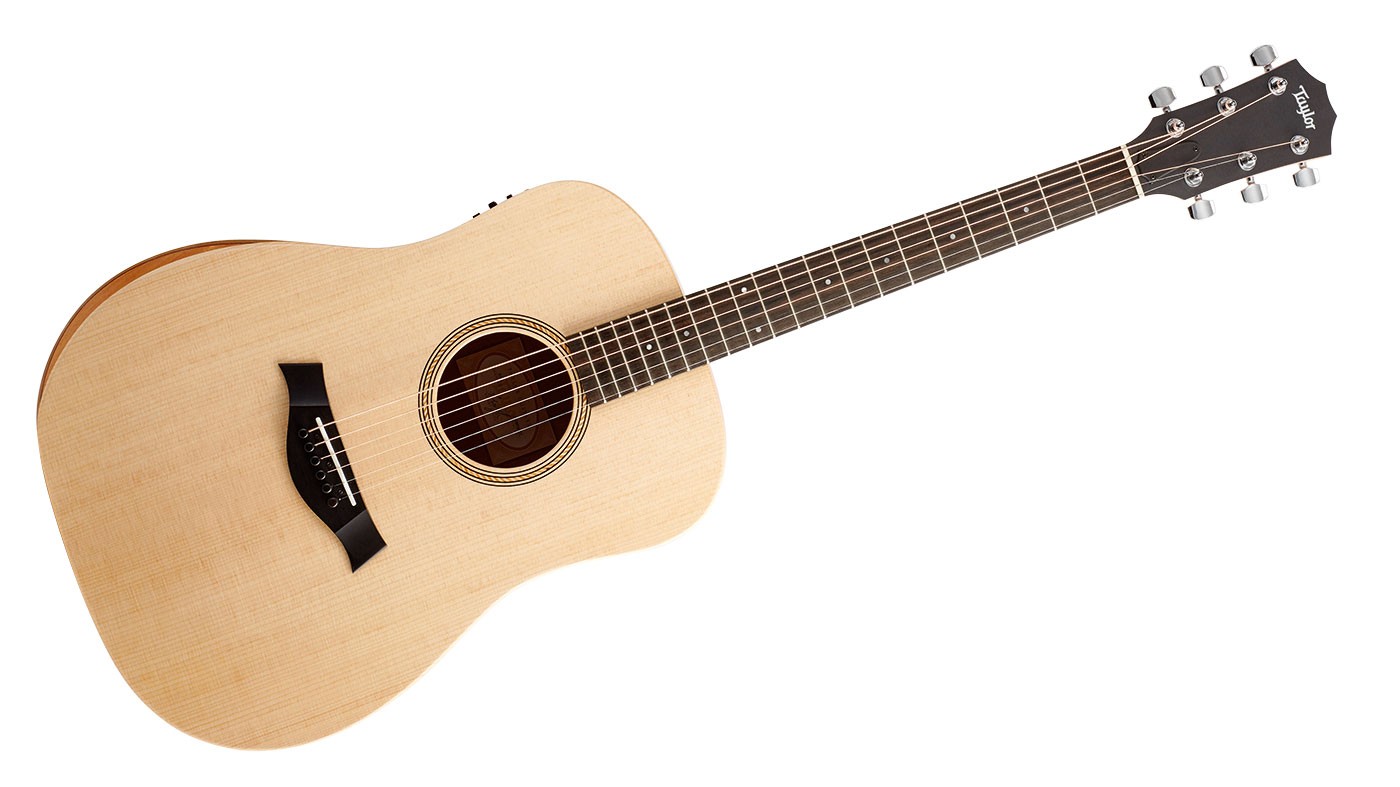
A slightly shorter 631mm scale length helps make the company’s Andy Powers-designed playing experience as pleasant as possible for beginners, but it’s a guitar that’s good for everyone. There’s superb bright balance here, and the armrest bevel genuinely makes for a more comfortable seated playing position.
Big and bold: Jumbo, 12-String And Baritone
The jumbo is the largest body of the acoustic family, and that often goes hand in hand with a deep low-end and louder output. Jumbos vary but usually wider in the waist than dreads’.
A 12-string guitar doubles the string quota; the low E, A, D and G string are usually tuned an octave apart, while the high E and B are tuned in unison. The result is a lush full sound with an out of phrase vibration from the strings that produces a shimmery quality. Baritone acoustics are between standard six-string and bass scale, the traditional ‘standard’ tuning for a baritone is a fourth lower than a standard guitar (BEADF#B) allowing for new, l lower avenues to be explored.

Epiphone EJ-200SCE
An affordable take on the Gibson early jumbo design Elvis and Dylan favoured, this electro cutaway features laminate maple back and sides with a solid spruce top, moustache bridge and the distinctive scratchplate decal. It’s even got stereo output for a wider sound!
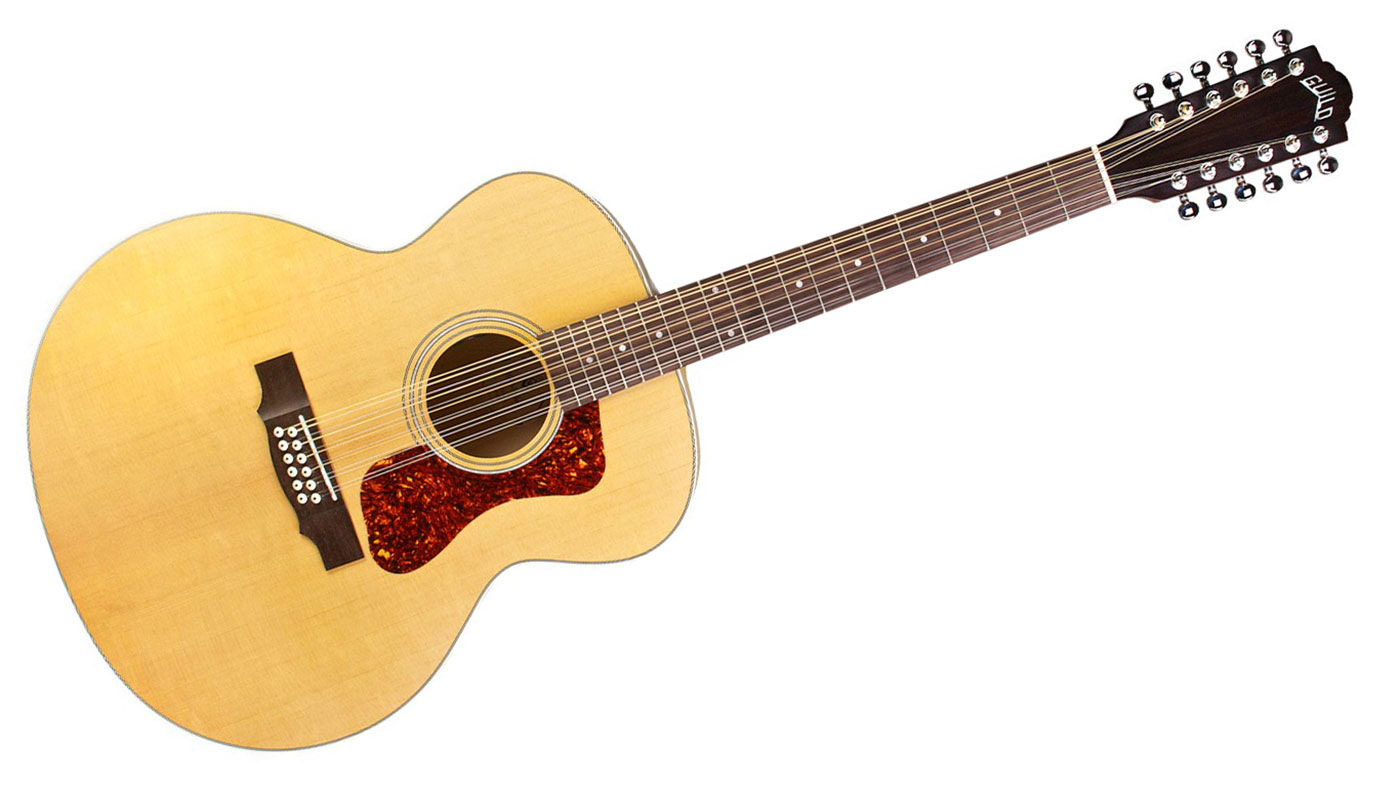
Guild are known as jumbo kings, but they make a mean 12-string too. This puts an electro model further into the ballpark of players who may have been priced out before, here with Guild’s own AP1 system. The spruce and maple make it an eye-catcher and it’s well-balanced where it counts.
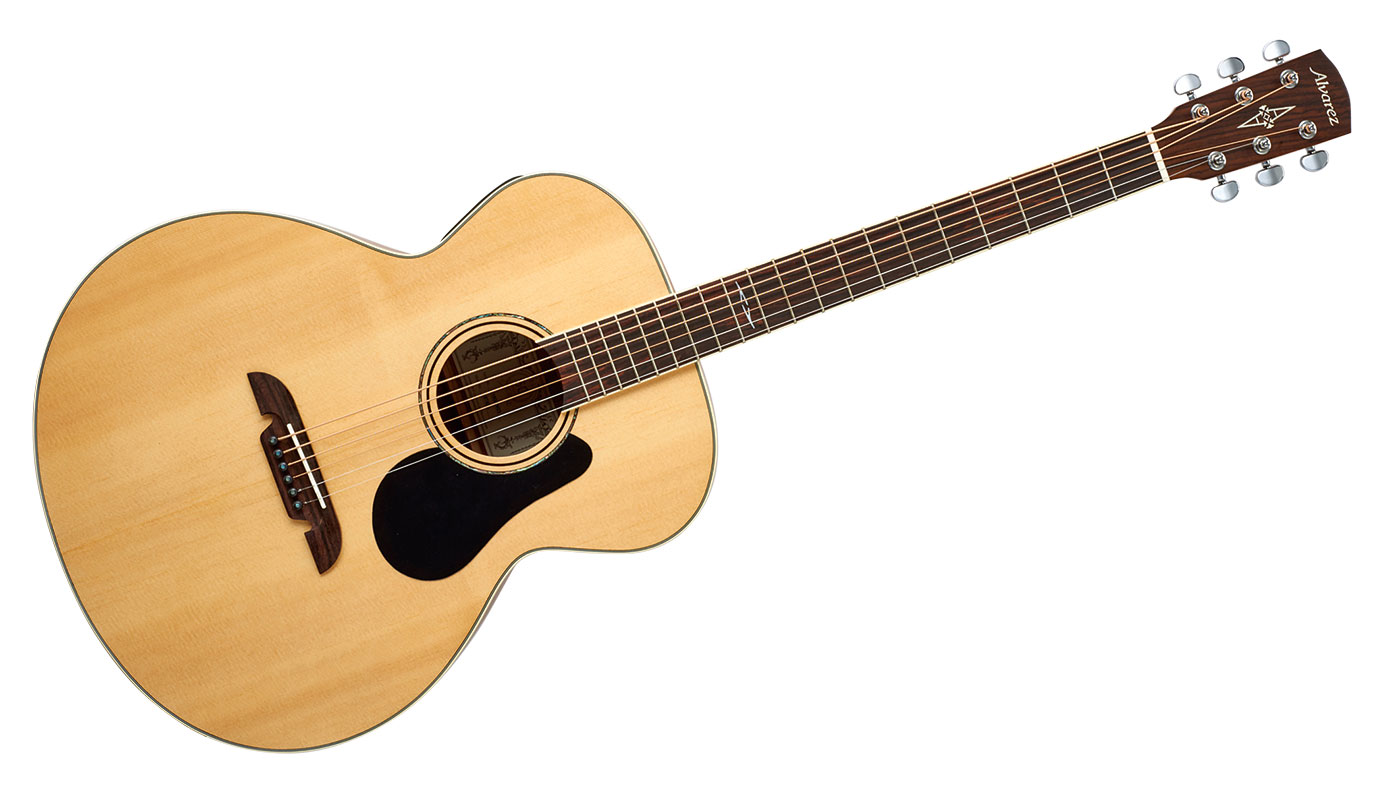
Alvarez ABT60E Baritone
Big body, big sound. The jumbo ABT body here is combined with a 704mm scale length and 122mm body depth. In play it works well as a bridge between the world of guitar and bass. The LR Baggs StagePro EQ preamp and Element pickup make it stage-ready too.
Folk and fingerpicking: 000, OM
Both Martin’s original 000 and OM (Orchestra Model) shapes have proved good alternatives for those who want something a little more compact as a dreadnought alternative. With shallower bodies (around 105mm) they tend to have less low-end with a focus on mid punch, especially when built with mahogany, the 000 dimensions are often popular with singer/ songwriters, including Jake Bugg.
It’s easy to mistake an 000 shape for an OM at a glance but the 000 is traditionally shorter scale at 635mm, while the OM is a longer (standard) scale 645mm. It’s a matter of preference, but shorter scale guitars can be punchier for picking and lead lines by emphasising the mid-range, while standard scale with a longer string length can be richer for chord work.
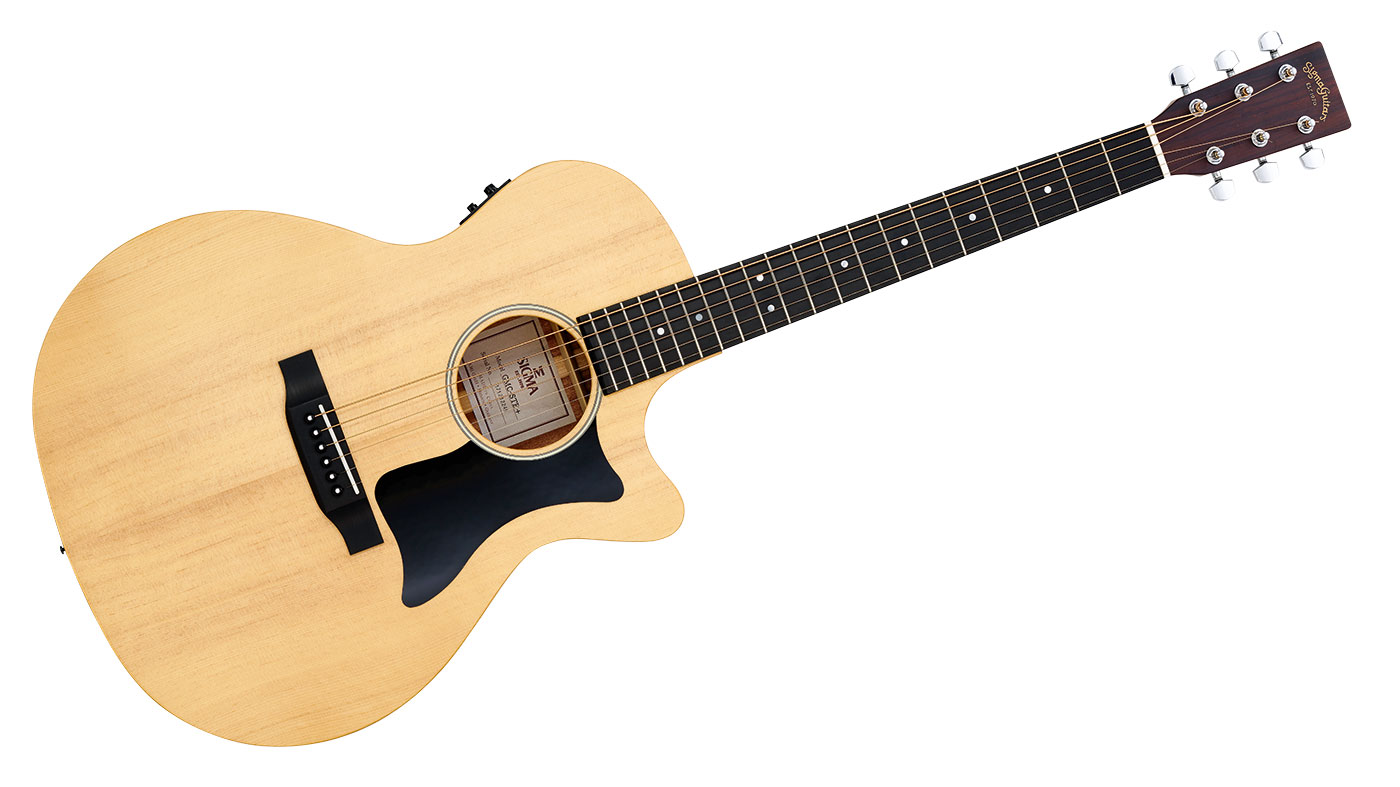
Sigma originally began as a Martin offshoot but even under new ownership continues to carry Martin-esque shapes. This OM offers a lot of guitar for the money; a lively high-end but balanced well with resonant lows and Fishman’s Isys+ turned in a fine performance when we played it.
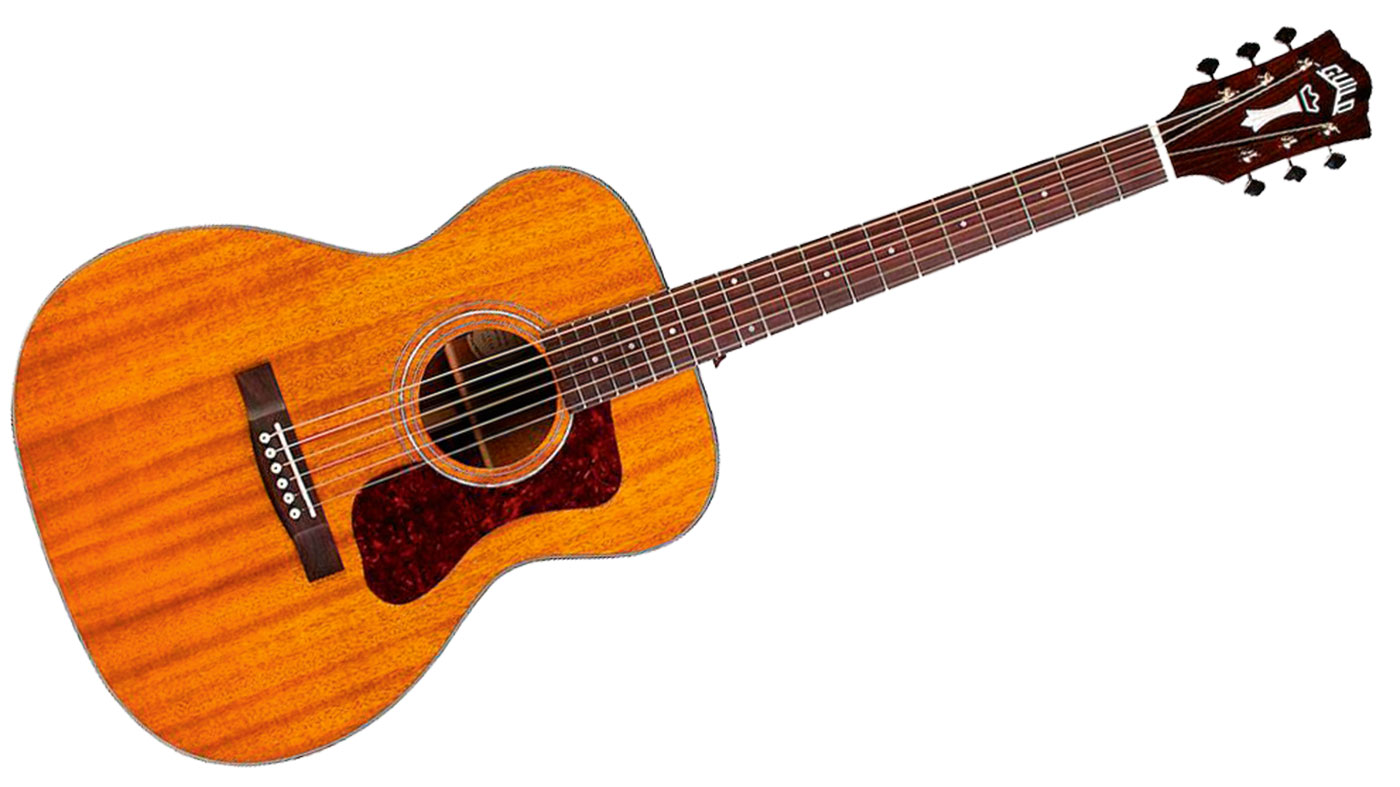
Guild OM-120
With solid African mahogany top, back and sides, the 60s-style headstock adds a retro slant to a quality build. With street prices closer to £500, this Westerly series model presents a good option for getting a solid-wood Guild at a mid-market price point.
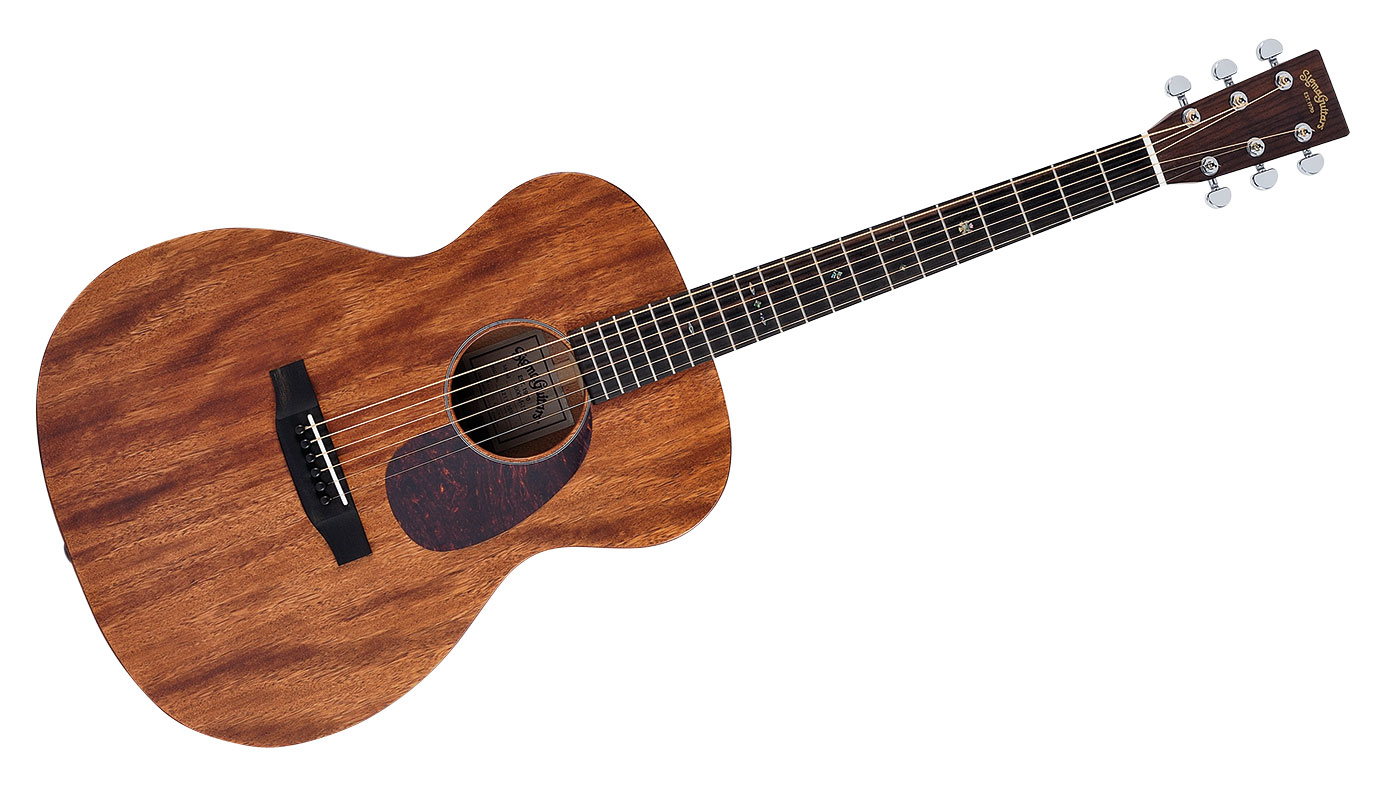
Sigma 000-15M+
This 000 14-fret design gets you in the ballpark of the Big M’s minimal traditionalism without the price tag. Solid mahogany top, laminate mahogany sides with the tonal advantages of a bone nut and saddle.
Blues roots: Parlour, O, OO
There’s been a rise in smaller-bodied acoustics as the parlour shape of the 1930s has gained favour with players again. We can see the appeal; they’re often intimate instruments with character. But the assumption they have higher-end focus isn’t always accurate; there is no set ‘parlour’ body size and they can vary in body depth, and neck dimensions between builders. Martin’s blueprint for the 0 and 00 designs are clear; the 00 style has a standard scale length (645mm) with a depth of around 103mm and 358mm max body width.
The 0 shape diff ers with a narrower body (around 342mm) and shorter 632mm scale length. This style of steel-string flat top tends to lend itself to fingerstyle blues and open tunings for slide with often a sweeter but boxier tonality focussing on the mid-range due to the reduced bass boom.
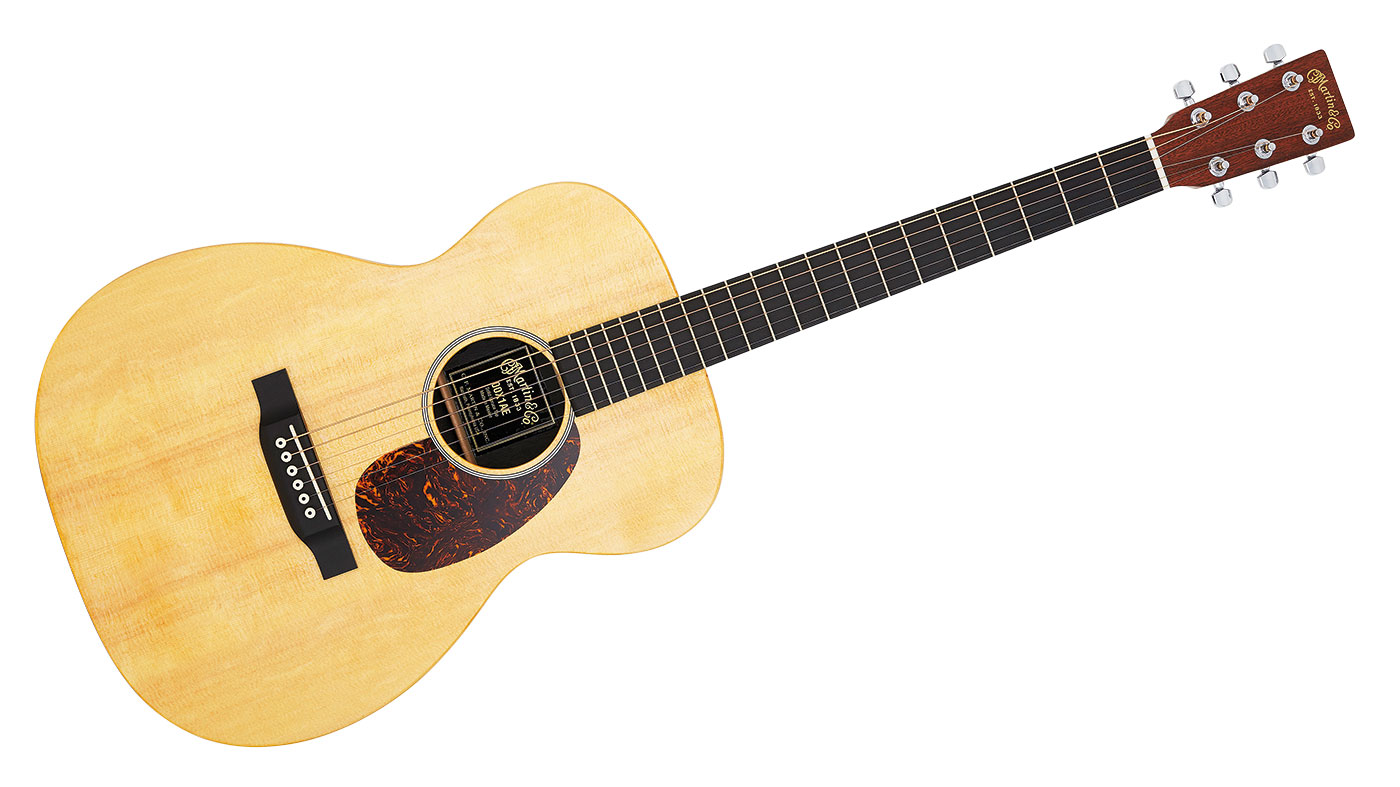
This 00 electro is at the more affordable end of the Martin line with a sitka spruce top and HPL (laminate) mahogany grained back and sides. The Fishman Sonitone preamp system offers a discreet tone (treble roll-off) and volume controls just inside the soundhole, plus a USB connection for direct recording.

Fender’s mahogany additions to its Paramount acoustic range impressed us last year; packing in solid back and sides with a hardcase to boot. This blends vintage with a little swish thanks to the checkerboard purfling. The PM-2 laughs in the face of anyone who says parlours don’t have bottom-end power to round out a lovely, earthy character.
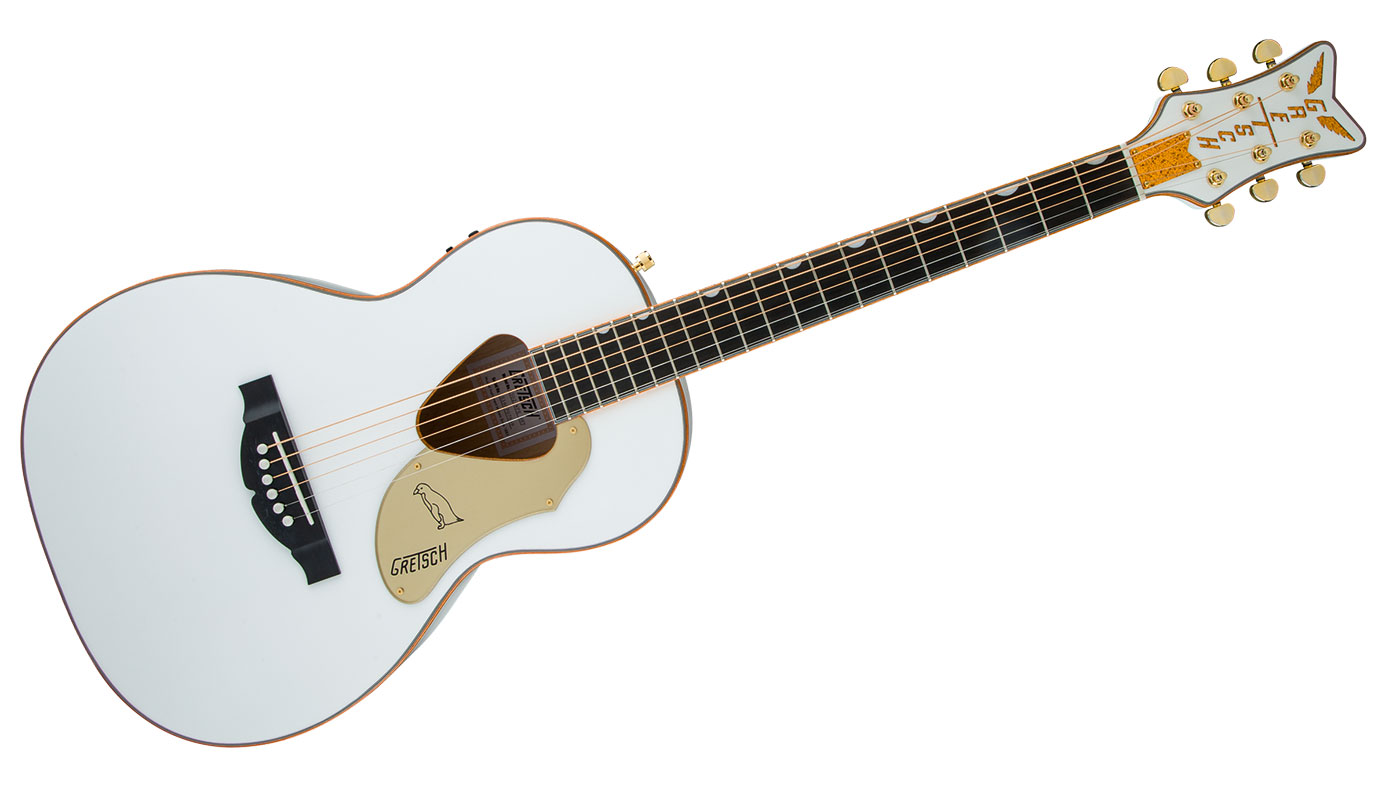
Gretsch G5021WPE Rancher Penguin
This is a dazzler and no mistake - a parlour take on the electric Penguin. This electro (fitted with Fishman’s Isys III system) has got powerful mids but also a bright high-end with the added twist of a narrower soundhole that we found encourages tonal dynamics as you play closer or further from it.
On the move: Compact Travel
You could justifiably credit the uber-successful Ed Sheeran and his Little Martin with the rise of travel-size acoustics, but in reality there’s a much wider potential appeal beyond singer/ songwriter troubadours for anyone who wants to take their guitar with them. And who doesn’t?
While 3/4 scale guitars can feel a bit like child’s guitars (and, let’s be honest, they are really), the 584 - 597mm (23 - 23.5”) scale range can also work really well for adult players when combined with canny design. Such guitars can also sound surprisingly full too…
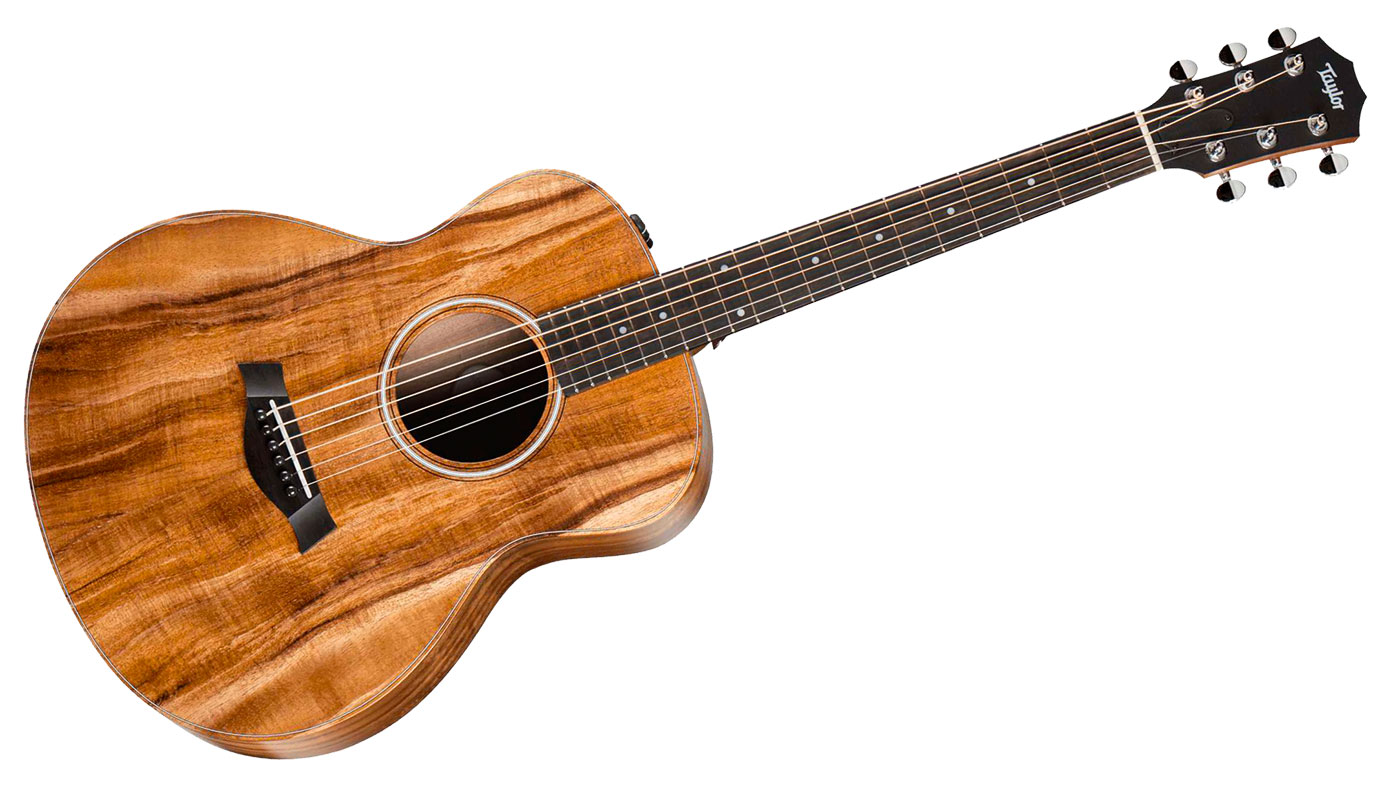
Taylor GS Mini-E Koa
Since its 2011 launch there’s been a number of iterations of this Andy Powers-design but the latest with Taylor’s Expression System 2 preamp is the best yet. And the price reflects a serious investment for a laminate B&S build. But its addictive and surprisingly detailed qualities have to be heard to be believed.

New from Yamaha, this all-solid electro has a lot going for it in a compact package; it sounds superbly balanced with a surprisingly rich bottom-end and strong higher frequencies. The 16" neck radius also feels satisfying for fingerstyle and the passive SRT pickup translates its qualities very well indeed.

A decent price and a hardcase included, this glossy little number offers impressive value with a bold, defined tonality. We especially liked the playability of the flat neck on this, and the Fishman Presys has threeband EQ onboard for shaping your tone.

Rob is the Reviews Editor for GuitarWorld.com and MusicRadar guitars, so spends most of his waking hours (and beyond) thinking about and trying the latest gear while making sure our reviews team is giving you thorough and honest tests of it. He's worked for guitar mags and sites as a writer and editor for nearly 20 years but still winces at the thought of restringing anything with a Floyd Rose.
“Beyond its beauty, the cocobolo contributes to the guitar’s overall projection and sustain”: Cort’s stunning new Gold Series acoustic is a love letter to an exotic tone wood
“Your full-scale companion. Anytime. Anywhere… the perfect companion to your full-size Martin”: Meet the Junior Series, the new small-bodied, travel-friendly acoustic range from Martin











